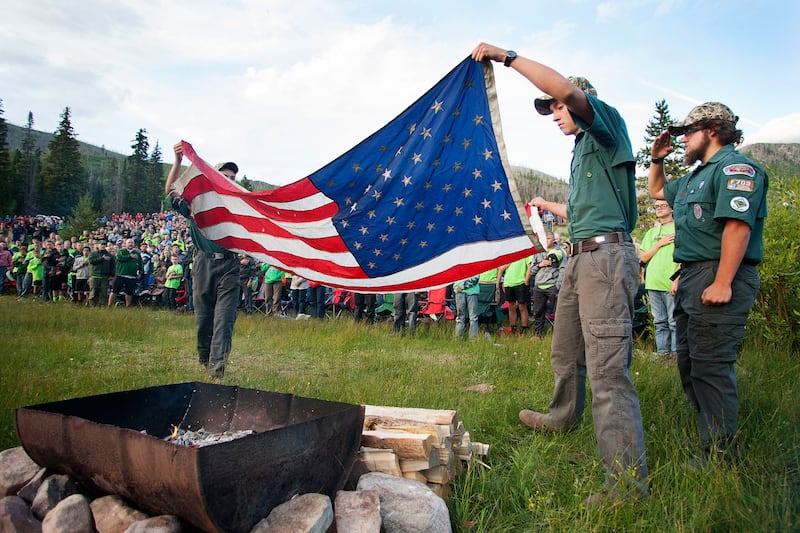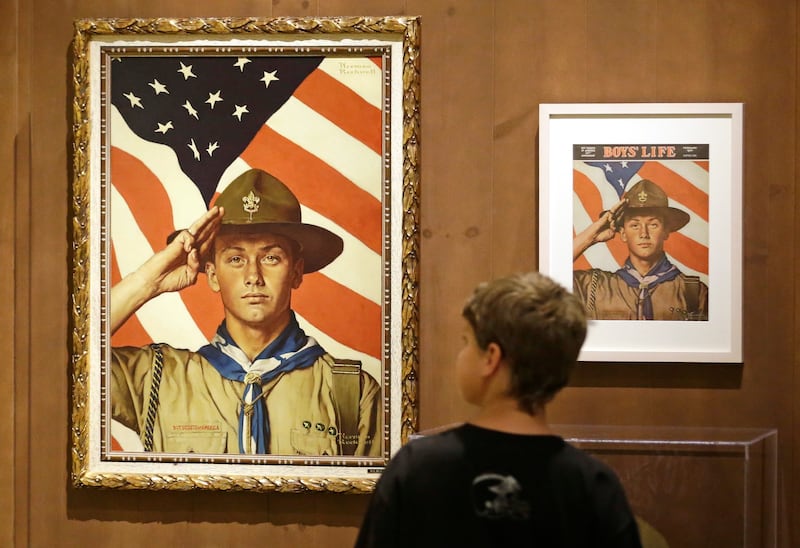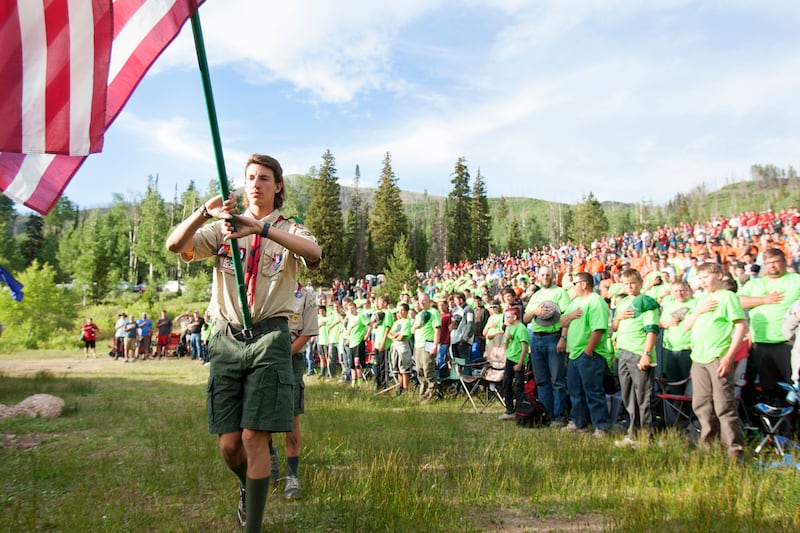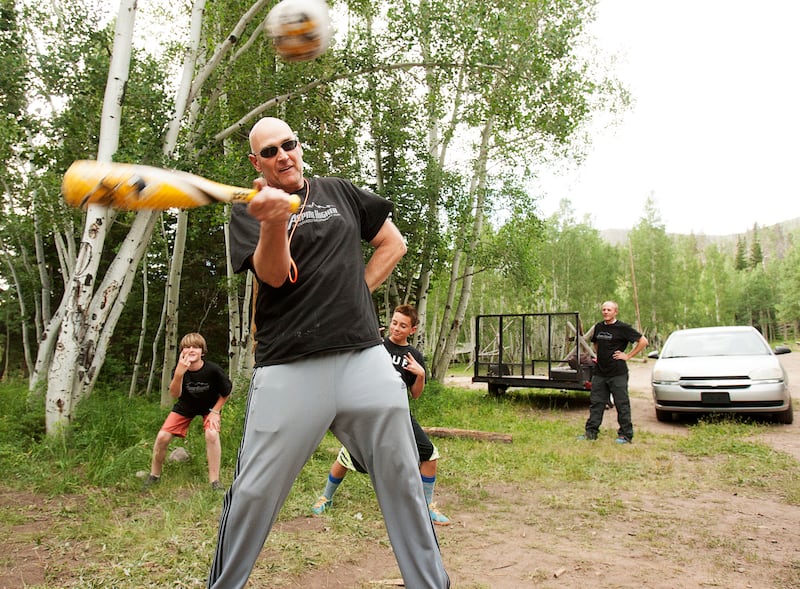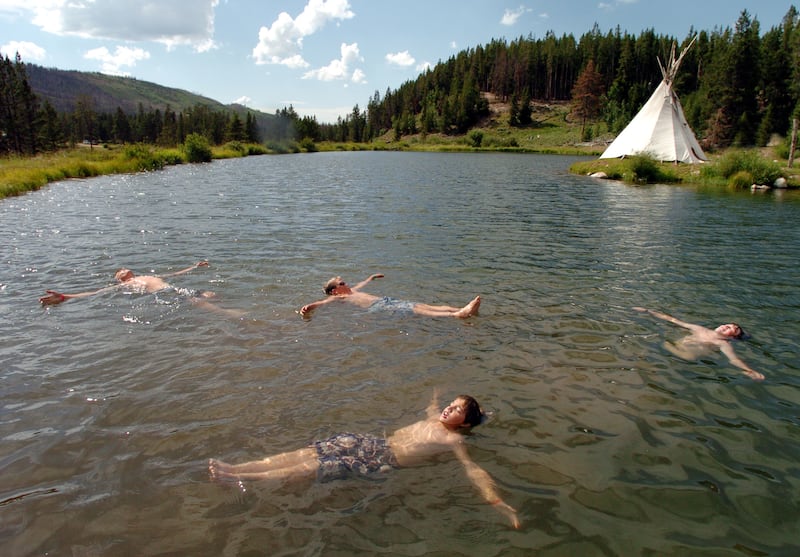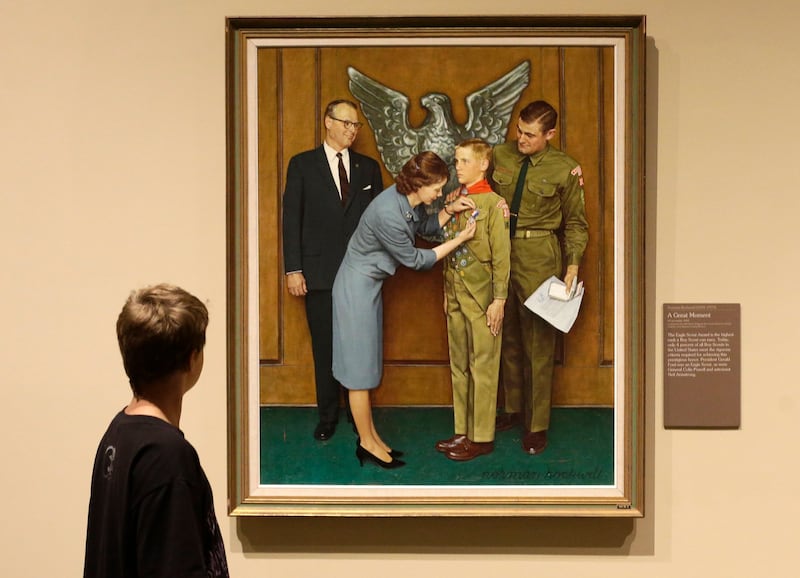SALT LAKE CITY — Over 105 years, the LDS Church intertwined itself with the Boy Scouts of America in ways so inextricable that the two seemed to share strands of DNA.
As amicable as Tuesday's announced breakup appears, extracting Scouting from its place in the Young Men's program of The Church of Jesus Christ of Latter-day Saints raises questions about what will happen to Scout camp properties and how the church will replace critical leadership training and leadership background checks provided by Scouting.
And as the church prepares, tests and eventually implements its new international initiative to replace Scouting and other activities and achievement programs for Mormon girls and boys ages 8 to 18, will it include camping?
For now, Elder Jeffrey R. Holland of the faith's Quorum of the Twelve Apostles and presidents of the Young Men, Young Women and Primary organizations continue to serve on the BSA's national executive and advisory boards, said BSA National Commissioner Charles Dahlquist, former general president of the church's Young Men organization.
Camps and land
National and Utah scout leaders said the church owns little of the land where its boys have enjoyed Scout camps for decades.
Utah has three Scout councils that use 26 camps, and only two are owned by the church. Of the other 24 camps, the councils own most outright, lease others from the U.S. Forest Service and use land donated by individuals specifically for the use of Scouting. Some of that donated land could revert back to previous owners if no longer used for Scouting purposes.
"We have to work through those documents and figure out the intent of that giving," said Stan Lockhart, who is completing a two-year commitment as past president of the Utah National Parks Council.
That council, which serves all Scouts in the state south of Salt Lake County, is the only one that uses LDS land. Two of its 13 camps are owned by the church, but they play minor roles. Bacon Park is used mostly for weekend activities and training. Buck Hollow is mostly for overnighters and Webelos day camps. Neither is a mainstream summer camp.
The Trapper Trails Council in northern Utah and parts of Idaho and Wyoming owns six of its eight camps, leasing the other two from the Forest Service.
The Great Salt Lake Council owns all five of its camps.
"Ironically," said David Park, scout executive for the Utah National Parks Council, "the reason we have so many camps is we're really good at getting non-Scouting users in, including for LDS girls camps and Young Men priesthood camps. A majority of our use in some of our camps is non-Boy Scout use."
BSA's national office also said it will not change the names of camps, lodges or other buildings named for prominent LDS leaders, such as the Thomas S. Monson Leadership Excellence Complex under construction at the Summit Bechtel Reserve, home of national jamborees in West Virginia, said Effie Delimarkos, BSA director of communications.
President Monson was a member of the BSA National Executive Board from 1969 until his death in January 2018 and received the organization's prestigious Silver Beaver and Silver Buffalo awards.
The church does own a few buildings. For example, the Great Salt Lake Council has been headquartered in a building next to the LDS Institute at the University of Utah for 50 years. The church recently purchased the building and gave the council land in West Valley City to build the Thomas S. Monson Scout Leadership and Service Center as its new headquarters.
The council still is raising funds for the building, which council president Mark Griffin said is now more important than ever, since troops now will have less access to LDS meetinghouses and the Institute.
What's next for LDS?
A major remaining question is whether the LDS Church's new initiative, which begins in January 2020, will include camping activities.
The church did not have additional comment on its plans Wednesday.
"The population of the church is much larger than the available recreational sites the church owns," Park said. "We expect in the future the church will still want to use our camps. There are very few replacement properties out there that accommodate larger groups."
The church does own a number of Young Women camps, and Dahlquist anticipated that the church's new initiative will include some camping.
"Whether the church purchases raw land, purchases a parcel of property that might be determined by BSA to be surplus or rents BSA camps, the church is going to need places for high-adventure activities for young men and women," he said.
Local Scout councils have allowed LDS congregations to use Scout camps for Young Women camps, Dahlquist said.
"What's the right thing to do, to own your own or to outsource it?" he said. "I think those decisions will be made both by the church and by the Boy Scouts of America."
"Anytime you have a separation of organizations, you do have certain business issues that must be decided. One of those has to do with liability issues."
For example, a physician who changes companies usually requires malpractice tail coverage when he or she cancels the previous medical malpractice insurance. BSA has provided the church with leader background checks, youth protection training and leadership training.
The church's decision also appears to mean the end to background searches for Young Men leaders involved in Scouting and leadership training they obtained through Philmont and other Scout programs for adult leaders, Dahlquist said.
"Those are issues the church will be addressing with its new initiative," he said, "and with Stephen Owen and his counselors in the Young Men general presidency and Joy Jones and her counselors in Primary and Bonnie Cordon and her counselors in Young Women, there is a strong group of individuals working to strengthen the rising generation of Latter-day Saints and a good team working on these issues."
What's next for BSA?
Today, Mormon-sponsored troops dominate the Utah Boy Scout scene. The LDS Church sponsors:
— 98 percent of troops in the Utah National Parks Council, which has 87,000 Scouts.
— 95 to 98 percent of troops in the Great Salt Lake Council, with its 65,000 Scouts.
— 96 percent of troops in the Trapper Trails Council.
The end of the relationship with the LDS Church will cause numbers in the Trapper Trails Council to drop off significantly from the 52,000 young men and young women who now participate in the council's Cub Scouts, Boy Scouts and other scout programs, the council's chief scout executive, Allen Endicott, said Wednesday on KSL NewsRadio's Doug Wright Show.
(The Boy Scouts name will change next year to Scouts BSA.)
That will create funding issues, but Delimarkos said the organization is grateful for the 19 months of lead time the LDS announcement provided.
"In the coming months, we will dedicate resources to support our councils that are most impacted by this decision so that they can evaluate opportunities to best plan a transition that enables them to operate in a sustainable manner once the partnership concludes at the end of 2019," she said.
Tens of thousands of today's Utah scouts are not LDS, and council leaders expect community recreation centers, other churches and perhaps even school districts will sponsor new troops to fill the ongoing need.
"I believe that Scouting in northern Utah, western Wyoming and southeastern Idaho will be able to continue to function," Endicott said, adding, "I believe deep down in my soul and the DNA of who I am that Scouting is as important as it's ever been."
The Utah National Parks Council has plans for new programs, council president Michael Neider said.
"We believe frankly that Scouting is still going to be vital to the communities and a help to families and young men," said Neider, who served in the LDS Young Men general presidency with Dahlquist. "We have plans to develop programs and new troops to allow Scouting to continue to benefit them."
Lockhart acknowledged a "cascading decision tree" of issues that must be addressed, but said "there is still a collegial feeling toward each other and 19-and-a-half months to work on them."
"This is an exciting time for Scouting to find new footing," he added. "This is really an opportunity to consider how to best meet the needs of individual children. I think it's a positive for the church and a positive for Scouting, as long as both seize the day."

